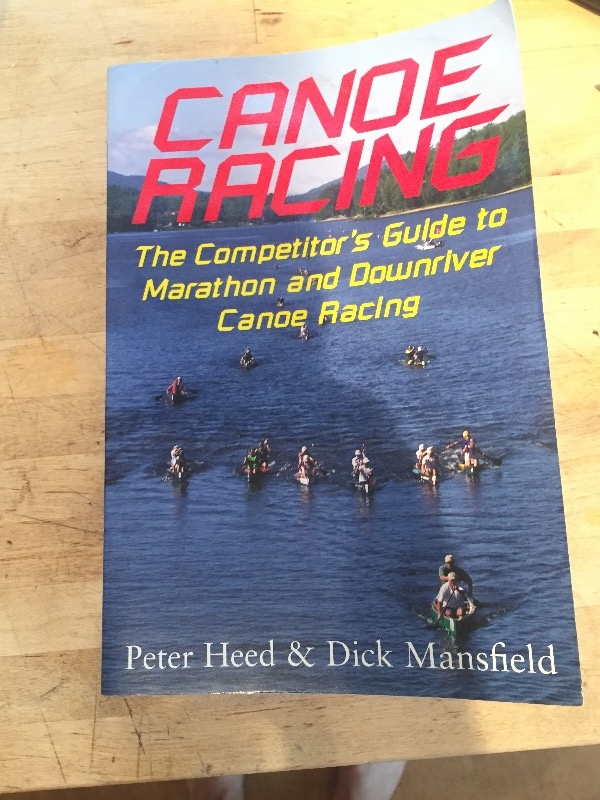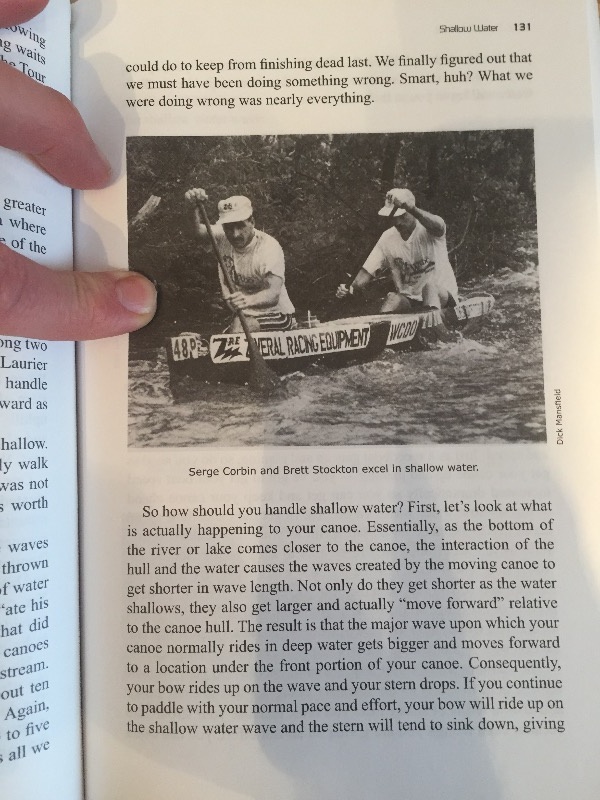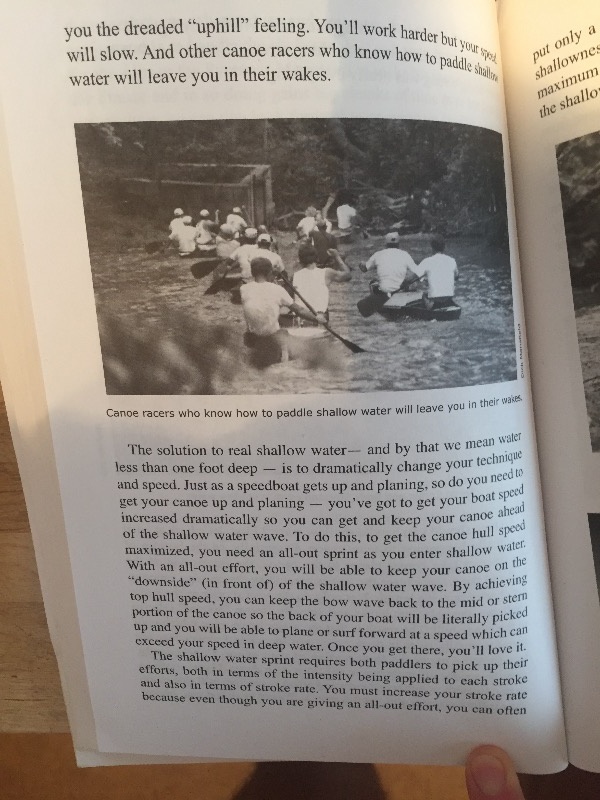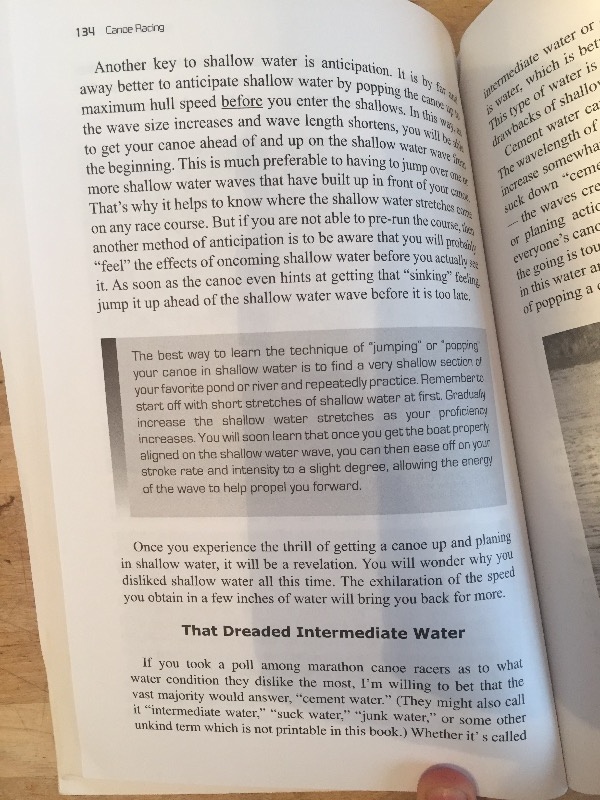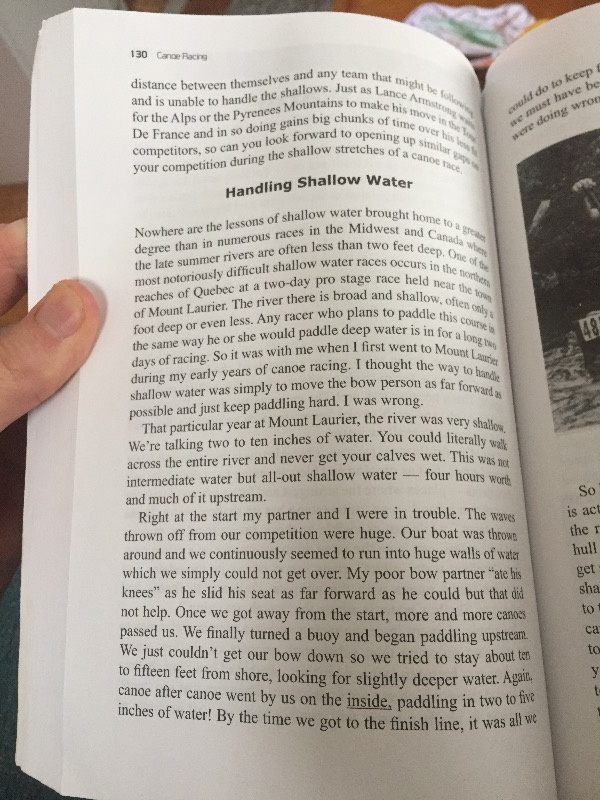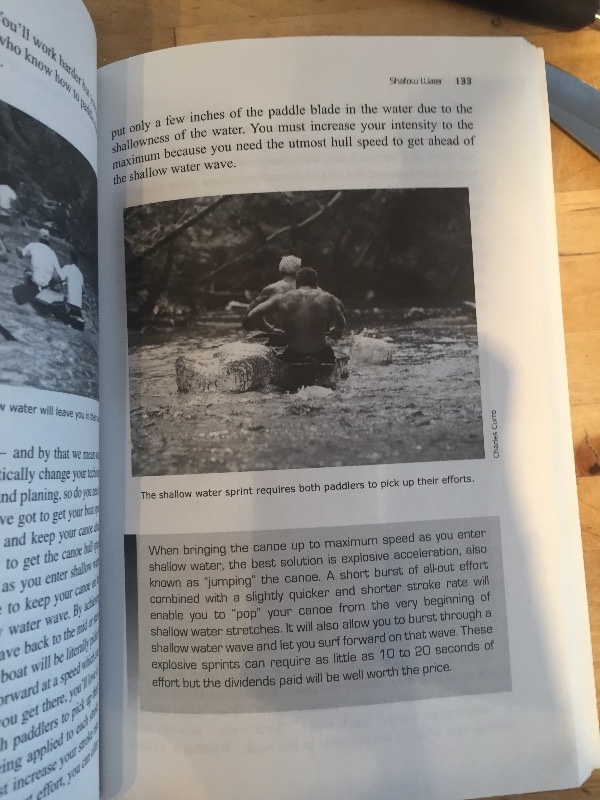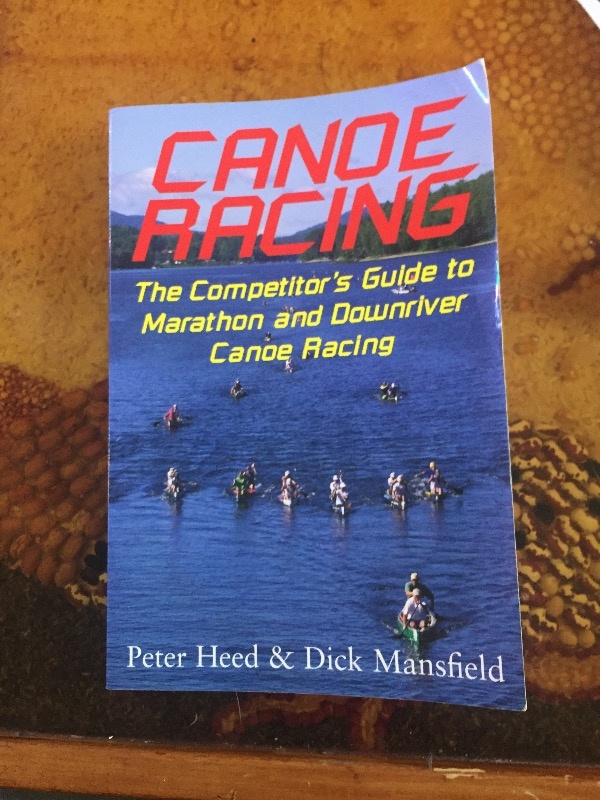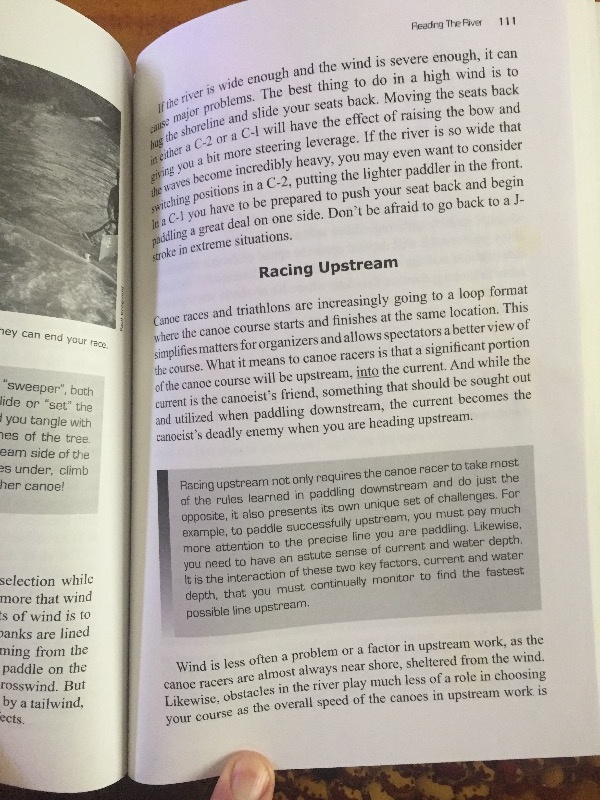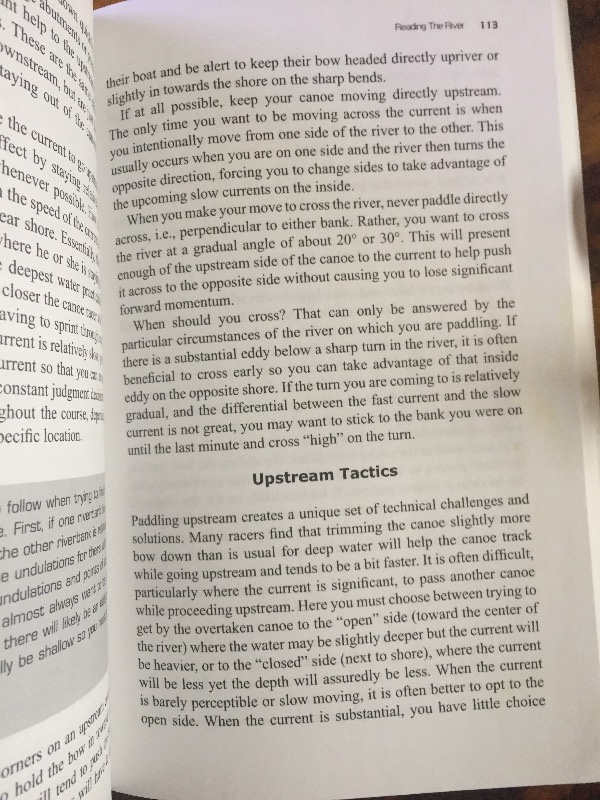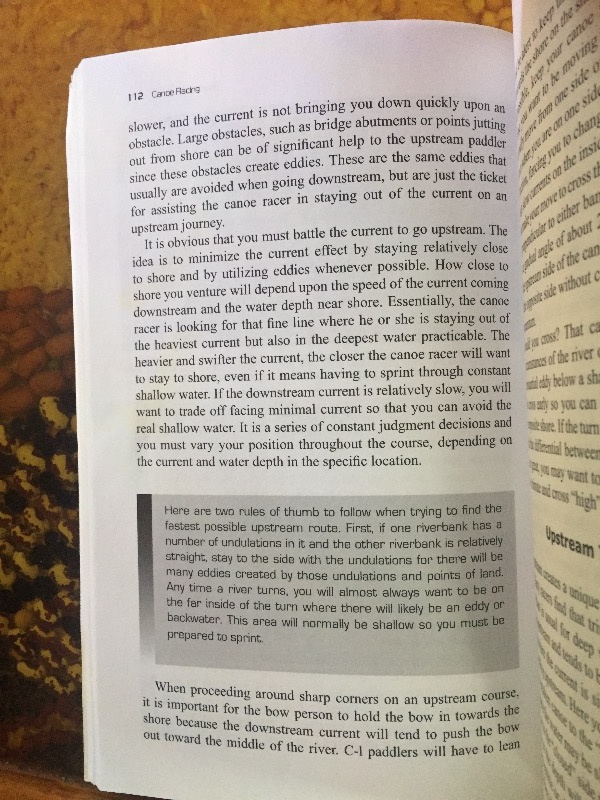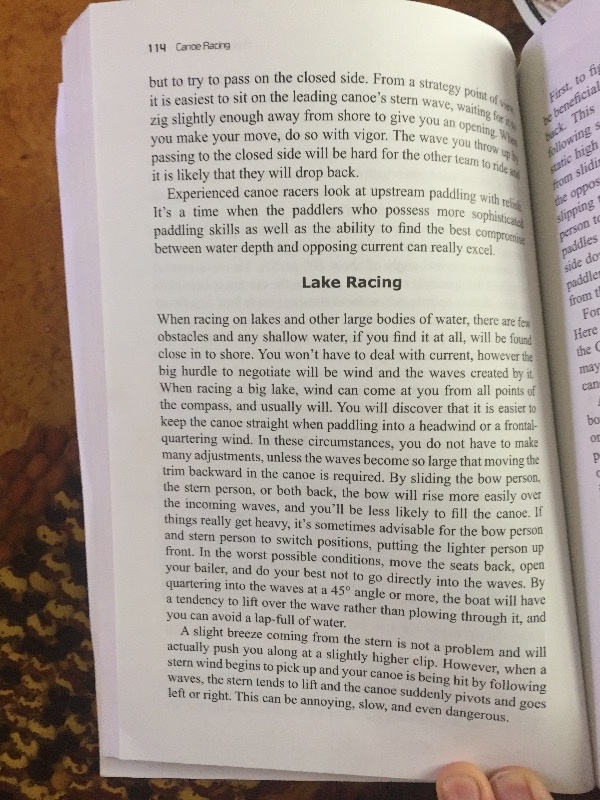Paddling up-current: Avoid shallows or avoid current?
6 years 1 month ago #33475
by d0uglass
Stellar SEI 1g
Paddling up-current: Avoid shallows or avoid current? was created by d0uglass
My local "time trial" course is in a lazy coastal river that's flows about 0.5 - 1.0 kph, and is about 1 - 2 m deep, with lots of bends and a few deeper spots and shallower shoals. It's a downriver - upriver course of 6.5 km total length.
If I'm trying to get the fastest round trip time possible, I generally stay in what I think is the deepest, fastest, mid-river water on the way downstream, and I cut corners and stay near the banks going upstream, except when to do so would put me in spots I know are really shallow. It's the strategy that seems to work for me when I do the course on a 14' paddleboard.
Now I'm wondering if the optimal paddleboard strategy is not the optimal for surfski, due to the faster speed and longer length of the surfski. Like, maybe it would be more beneficial to stay in as deep of water as possible even if it means a bit more current, to avoid that shallow water speed penalty. I imagine some of y'all paddle in rivers with current and shallow spots, too. Do you have any rules of thumb or tips for this kind of thing?
Thanks!
If I'm trying to get the fastest round trip time possible, I generally stay in what I think is the deepest, fastest, mid-river water on the way downstream, and I cut corners and stay near the banks going upstream, except when to do so would put me in spots I know are really shallow. It's the strategy that seems to work for me when I do the course on a 14' paddleboard.
Now I'm wondering if the optimal paddleboard strategy is not the optimal for surfski, due to the faster speed and longer length of the surfski. Like, maybe it would be more beneficial to stay in as deep of water as possible even if it means a bit more current, to avoid that shallow water speed penalty. I imagine some of y'all paddle in rivers with current and shallow spots, too. Do you have any rules of thumb or tips for this kind of thing?
Thanks!
Stellar SEI 1g
Please Log in or Create an account to join the conversation.
6 years 1 month ago #33476
by Impala
Replied by Impala on topic Paddling up-current: Avoid shallows or avoid current?
I use to paddle on a fast river (6 kph in the middle), so staying near the bank is imperative to make perceptible progress. This is at least valid for normal water flow. If water is low, large areas from bank to mid become shallows over which water is flowing with 3-4kph, making paddling no fun at all.
My boats have all considerable rocker, which is nice in waves, but makes these hulls suck terribly in shallows. Another boat that I sold in the meantime had very little rocker (at 610 cm length), and this boat did almost not suck in shallow water. But my local conditions are such that sucking a bit near the bank is still way better than fighting 6kph counter-current.
My impression is that shorter, broader boats with more rocker tend to suck more, each of these factors adds to suckiness.
My boats have all considerable rocker, which is nice in waves, but makes these hulls suck terribly in shallows. Another boat that I sold in the meantime had very little rocker (at 610 cm length), and this boat did almost not suck in shallow water. But my local conditions are such that sucking a bit near the bank is still way better than fighting 6kph counter-current.
My impression is that shorter, broader boats with more rocker tend to suck more, each of these factors adds to suckiness.
The following user(s) said Thank You: d0uglass
Please Log in or Create an account to join the conversation.
6 years 1 month ago - 6 years 1 month ago #33480
by mcnye1
Replied by mcnye1 on topic Paddling up-current: Avoid shallows or avoid current?
Generally speaking, you want to stay in shallower water with less current upstream and deeper water with more current down. Around curves, the deepest water is almost always on the outside of the curve. Always consider the shortest path.
These rules apply to your ski just as they do to the SUP, but there are a couple of considerations. First, the ski is much faster so current will have less impact then it does on the SUP. Secondly, since the ski is longer, you will feel the "shallow water suck" in deeper water than the SUP. The "suck" starts in water depth that is about 1/4 of your water line length.
As Impala says, staying close to the bank in fast moving rivers is very much more important than on slow rivers like yours.
The general rules are easy, but learning to apply them is an acquired skill. Most of the Florida Competition Paddlers Association Races are in technical rivers so I have had a chance to learn this skill from very experienced river racers. Nothing teaches as well as watching another paddler zoom by you on the opposite side of the river when you choose incorrectly.
FCPA is in the heart of our racing season and we would love you to join us. Next five races: 16Feb/StPete, 9March/Ft Myers, 16Mar/Tampa, 13Apr/Tallahassee, 11May/Orlando. The first two are tidal races but the three others are technical rivers.
These rules apply to your ski just as they do to the SUP, but there are a couple of considerations. First, the ski is much faster so current will have less impact then it does on the SUP. Secondly, since the ski is longer, you will feel the "shallow water suck" in deeper water than the SUP. The "suck" starts in water depth that is about 1/4 of your water line length.
As Impala says, staying close to the bank in fast moving rivers is very much more important than on slow rivers like yours.
The general rules are easy, but learning to apply them is an acquired skill. Most of the Florida Competition Paddlers Association Races are in technical rivers so I have had a chance to learn this skill from very experienced river racers. Nothing teaches as well as watching another paddler zoom by you on the opposite side of the river when you choose incorrectly.
FCPA is in the heart of our racing season and we would love you to join us. Next five races: 16Feb/StPete, 9March/Ft Myers, 16Mar/Tampa, 13Apr/Tallahassee, 11May/Orlando. The first two are tidal races but the three others are technical rivers.
Last edit: 6 years 1 month ago by mcnye1.
The following user(s) said Thank You: d0uglass
Please Log in or Create an account to join the conversation.
6 years 1 month ago #33481
by kwolfe
Replied by kwolfe on topic Paddling up-current: Avoid shallows or avoid current?
I paddle lakes and one large river around me. My river can move around 3mph. In your case, I would avoid the shallows. 1kph is less than 1mph and that's not moving all that fast. That shallow water suck will slow you down that much an really tire you out depending on how shallow it is.
There is one section I paddle where the water goes to about 2ft deep an it feels like I'm paddling in mud.
There is one section I paddle where the water goes to about 2ft deep an it feels like I'm paddling in mud.
The following user(s) said Thank You: d0uglass
Please Log in or Create an account to join the conversation.
6 years 1 month ago #33484
by davgdavg
Replied by davgdavg on topic Paddling up-current: Avoid shallows or avoid current?
I had an extremely low rocker boat that was quite long and even in that if the water was less than about 3 feet my speed would drop by 5km/h easy. I would say at .5 to 1km/h its best to just go for the deepest water possible, up and back.
Please Log in or Create an account to join the conversation.
- zachhandler
-

- Offline
- Platinum Member
Less
More
- Posts: 797
- Thank you received: 200
6 years 1 month ago #33495
by zachhandler
Current Skis: Nelo Vanquish AIR, Epic V10g4, NK 670 double, NK exrcize, Carbonology Feather, Think Jet, Knysna Sonic X
Former Skis: Epic v10g3, Kai Waa Vega, Epic V12 g2, Epic V12 g1, Epic v10 double, Nelo 550 g2, Fenn Elite S, Custom Kayaks Synergy
Replied by zachhandler on topic Paddling up-current: Avoid shallows or avoid current?
Douglas your river has barely any current. Generally upstream in a faster river you hug the inside corners. The bottom drag affects you less than the midstream current, and the inside corners are the shortest line so it is a no brainer to go inside. Downstream is when decisions have to be made because the fast current is also the longest route. I gather you understand all that though. In your case it sounds like there is barely current, so bottom drag in the shallows might actually affect you more than midstream current going upstream.
One thing to consider is that if you are powerful you can “pop” the boat in the shallows. When that happens the hull dynamics completely change and you can actually paddle in 1-2 ft deep water faster than you can in very deep water. It requires fairly firm bottom. Sand is perfect, rotting swamp muck not so much. You will hit the bottom with the paddle at times, so rocky bottoms and ultralight paddles are a poor combination. Popping a boat is an intense interval that most of us mortals either can’t achieve or can only hold for a few minutes. The pros can keep a boat popped in the shallows for hours. If you are capable of popping, and you know the river well, there may be inside corners that you can pop without destroying yourself. Basically you build a head of speed in the deeper water then pop over the shallows into the next deep water. You have to practice popping a lot so that you can feel when the boat is popped, and then learn to decrease effort until the boat is on the verge of losing the pop. That lets you pop for long periods.
One thing to consider is that if you are powerful you can “pop” the boat in the shallows. When that happens the hull dynamics completely change and you can actually paddle in 1-2 ft deep water faster than you can in very deep water. It requires fairly firm bottom. Sand is perfect, rotting swamp muck not so much. You will hit the bottom with the paddle at times, so rocky bottoms and ultralight paddles are a poor combination. Popping a boat is an intense interval that most of us mortals either can’t achieve or can only hold for a few minutes. The pros can keep a boat popped in the shallows for hours. If you are capable of popping, and you know the river well, there may be inside corners that you can pop without destroying yourself. Basically you build a head of speed in the deeper water then pop over the shallows into the next deep water. You have to practice popping a lot so that you can feel when the boat is popped, and then learn to decrease effort until the boat is on the verge of losing the pop. That lets you pop for long periods.
Current Skis: Nelo Vanquish AIR, Epic V10g4, NK 670 double, NK exrcize, Carbonology Feather, Think Jet, Knysna Sonic X
Former Skis: Epic v10g3, Kai Waa Vega, Epic V12 g2, Epic V12 g1, Epic v10 double, Nelo 550 g2, Fenn Elite S, Custom Kayaks Synergy
The following user(s) said Thank You: d0uglass
Please Log in or Create an account to join the conversation.
6 years 1 month ago #33497
by PSwitzer
Replied by PSwitzer on topic Paddling up-current: Avoid shallows or avoid current?
Dude, Zach, you're serious about the popping and not pulling our legs? That is mind blowing! Have you actually felt this happen? So you're heading towards a sand bar or whatnot busting your ass at say, 14 kph then you hit the shallows and actually accelerate? That's nuts!
Please Log in or Create an account to join the conversation.
- zachhandler
-

- Offline
- Platinum Member
Less
More
- Posts: 797
- Thank you received: 200
6 years 1 month ago #33498
by zachhandler
Current Skis: Nelo Vanquish AIR, Epic V10g4, NK 670 double, NK exrcize, Carbonology Feather, Think Jet, Knysna Sonic X
Former Skis: Epic v10g3, Kai Waa Vega, Epic V12 g2, Epic V12 g1, Epic v10 double, Nelo 550 g2, Fenn Elite S, Custom Kayaks Synergy
Replied by zachhandler on topic Paddling up-current: Avoid shallows or avoid current?
Not kidding at all about popping. I live in minnesota USA and canoe racing is the dominant paddle racing sport. Canoe racers are obsessed with popping the boat. The flat hull of a canoe is more affected by bottom drag, but also pops really well. For years and years i paddled with canoe racers in my surfski or k1 and i never understood why they always sprinted en masse into the shallows. After about 5 years one of them finally explained it to me.
The standard explanation for the physics behind it is that when you are going normal speed in the shallows the bow wave you are creating bounces of the bottom of the lake and and then hits the underside of the hull in front of the midpoint of the boat, causing the stern to squat. The boat points uphill and goes very slow and there is almost no way to climb the bow wave. On the otherhand, with a burst of speed you can race over this reflected bow wave, and then the wave reflected off the bottom is then hitting behind the midpoint of the boat and you are surfing your own wave. This explanation may not be accurate; there is controversy and i have read a well thought out explanation that asserts that what is actually happening with the bow wave is that it stops being produced at high speed in shallow water. Regardless the effect is real. It has been tested with large brittish naval ships (in their case pop water was 10 meters depth) and the navel vessels had a higher maximum speed in pop water than in deep water.
You can try this for yourself. Hit a patch of 12-18” deep water with sprint speed and high paddle cadence. Best to build the speed in deep water while aiming for the shallows. You will feel the boat get light, the resistance on the paddle get light, and your gps will show you going 1 mph or so faster than your effort would indicate.
In between deep water and pop water is the dreaded suck water, from about 2-4 feet depth. Suck water is slow and cannot be popped. It sucks.
The standard explanation for the physics behind it is that when you are going normal speed in the shallows the bow wave you are creating bounces of the bottom of the lake and and then hits the underside of the hull in front of the midpoint of the boat, causing the stern to squat. The boat points uphill and goes very slow and there is almost no way to climb the bow wave. On the otherhand, with a burst of speed you can race over this reflected bow wave, and then the wave reflected off the bottom is then hitting behind the midpoint of the boat and you are surfing your own wave. This explanation may not be accurate; there is controversy and i have read a well thought out explanation that asserts that what is actually happening with the bow wave is that it stops being produced at high speed in shallow water. Regardless the effect is real. It has been tested with large brittish naval ships (in their case pop water was 10 meters depth) and the navel vessels had a higher maximum speed in pop water than in deep water.
You can try this for yourself. Hit a patch of 12-18” deep water with sprint speed and high paddle cadence. Best to build the speed in deep water while aiming for the shallows. You will feel the boat get light, the resistance on the paddle get light, and your gps will show you going 1 mph or so faster than your effort would indicate.
In between deep water and pop water is the dreaded suck water, from about 2-4 feet depth. Suck water is slow and cannot be popped. It sucks.
Current Skis: Nelo Vanquish AIR, Epic V10g4, NK 670 double, NK exrcize, Carbonology Feather, Think Jet, Knysna Sonic X
Former Skis: Epic v10g3, Kai Waa Vega, Epic V12 g2, Epic V12 g1, Epic v10 double, Nelo 550 g2, Fenn Elite S, Custom Kayaks Synergy
The following user(s) said Thank You: PSwitzer
Please Log in or Create an account to join the conversation.
- zachhandler
-

- Offline
- Platinum Member
Less
More
- Posts: 797
- Thank you received: 200
6 years 1 month ago #33500
by zachhandler
Current Skis: Nelo Vanquish AIR, Epic V10g4, NK 670 double, NK exrcize, Carbonology Feather, Think Jet, Knysna Sonic X
Former Skis: Epic v10g3, Kai Waa Vega, Epic V12 g2, Epic V12 g1, Epic v10 double, Nelo 550 g2, Fenn Elite S, Custom Kayaks Synergy
Replied by zachhandler on topic Paddling up-current: Avoid shallows or avoid current?
Canoe Racing by Heed and Mansfield is worth owning. Here are some pages on pop water. Hope you can read the images. I think i the first page is out of order.
Current Skis: Nelo Vanquish AIR, Epic V10g4, NK 670 double, NK exrcize, Carbonology Feather, Think Jet, Knysna Sonic X
Former Skis: Epic v10g3, Kai Waa Vega, Epic V12 g2, Epic V12 g1, Epic v10 double, Nelo 550 g2, Fenn Elite S, Custom Kayaks Synergy
Please Log in or Create an account to join the conversation.
- zachhandler
-

- Offline
- Platinum Member
Less
More
- Posts: 797
- Thank you received: 200
6 years 1 month ago #33501
by zachhandler
Current Skis: Nelo Vanquish AIR, Epic V10g4, NK 670 double, NK exrcize, Carbonology Feather, Think Jet, Knysna Sonic X
Former Skis: Epic v10g3, Kai Waa Vega, Epic V12 g2, Epic V12 g1, Epic v10 double, Nelo 550 g2, Fenn Elite S, Custom Kayaks Synergy
Replied by zachhandler on topic Paddling up-current: Avoid shallows or avoid current?
A brief treatment of upstream racing. Again this is a book worth owning. 240 pages and the majority very applicable to marathon kayak as well.
Current Skis: Nelo Vanquish AIR, Epic V10g4, NK 670 double, NK exrcize, Carbonology Feather, Think Jet, Knysna Sonic X
Former Skis: Epic v10g3, Kai Waa Vega, Epic V12 g2, Epic V12 g1, Epic v10 double, Nelo 550 g2, Fenn Elite S, Custom Kayaks Synergy
Please Log in or Create an account to join the conversation.
- MCImes
- Visitor
6 years 1 month ago #33509
by MCImes
Replied by MCImes on topic Paddling up-current: Avoid shallows or avoid current?
Zach's explanation is spot on. Before I got into surfski I raced canoes with the same group in MN. The elite racers can stay popped a ridiculously long time.
To your point PSwizer, Yes, you can be at full race pace, head towards the shallows, pop and gain speed. here's the trick, its all about timing the sprint at the beginning of the pop water. You have to do a short sprint (3-8 strokes) to accelerate the boat 'over' your bow wave at just the right time. If you're too late the bow wave forms in front of you and its impossible to climb over. If you're too early you may run out of gas before the shallows are done. Its all about 'climbing out of' the suck water at just the right time when the suck water ends and pop water begins.
If done perfectly, you do the short sprint, you feel the pop happen (you accelerate and 'effort per speed' ratio decreases) then you back off the power until you almost feel the boat lose the pop. The trick is knowing how far you can reduce power without losing the pop, which comes with time.
Also as Zach says, a flat bottomed boat like a north american canoe is more affected by the pop, but its still noticeable in a ski as well.
To your point PSwizer, Yes, you can be at full race pace, head towards the shallows, pop and gain speed. here's the trick, its all about timing the sprint at the beginning of the pop water. You have to do a short sprint (3-8 strokes) to accelerate the boat 'over' your bow wave at just the right time. If you're too late the bow wave forms in front of you and its impossible to climb over. If you're too early you may run out of gas before the shallows are done. Its all about 'climbing out of' the suck water at just the right time when the suck water ends and pop water begins.
If done perfectly, you do the short sprint, you feel the pop happen (you accelerate and 'effort per speed' ratio decreases) then you back off the power until you almost feel the boat lose the pop. The trick is knowing how far you can reduce power without losing the pop, which comes with time.
Also as Zach says, a flat bottomed boat like a north american canoe is more affected by the pop, but its still noticeable in a ski as well.
Please Log in or Create an account to join the conversation.
Latest Forum Topics
-
- Paddling with rotator cuff injury
- 1 day 1 hour ago
-
- Nelo Vanquish AIR review
- 1 day 23 hours ago


